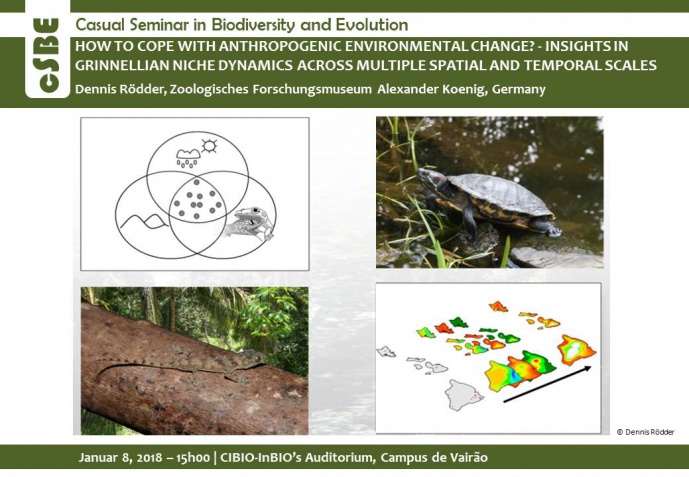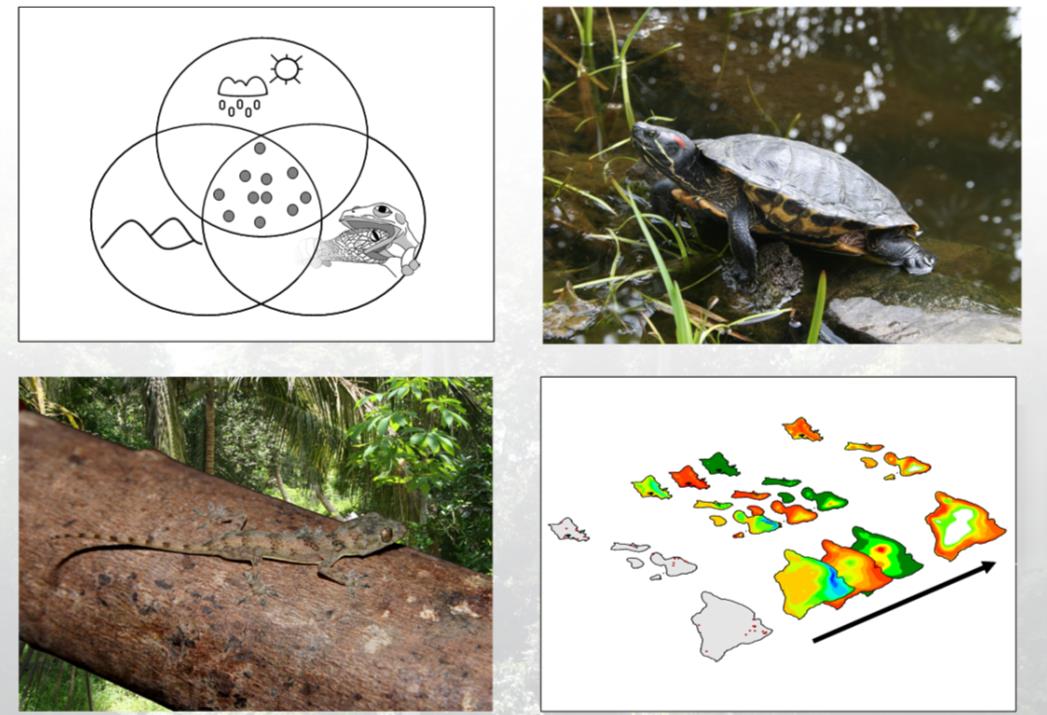HOW TO COPE WITH ANTHROPOGENIC ENVIRONMENTAL CHANGE? - INSIGHTS IN GRINNELLIAN NICHE DYNAMICS ACROSS MULTIPLE SPATIAL AND TEMPORAL SCALES

CASUAL SEMINAR IN BIODIVERSITY AND EVOLUTION

Anthropogenic habitat modification and climate change are affecting global biodiversity, causing both a loss of genetic and functional diversity. During the last decade impressive advances in terms of data availability and computational power have enabled spatial explicit studies of these effects. Starting from analyses on how a species’ geographic distribution can be explained by broad scale environmental variables, correlative statistical methods - and more recently mechanistic physiological models - were developed to estimate past, current and potential future impacts of anthropogenic effects. Today, these models can be combined with multiple other data sets and applications are manifold. They range from simulations of gene flow across landscapes using connectivity models to guide conservation efforts to test for signatures of niche stasis or niche shift if combined with phylogenetic information. However, both the theoretical background and the methodologies themselves are still under rapid development and many important aspects are still to be explored.
In this talk I will provide an overview of ten years of my macro-ecological research, focusing (1) on SDM applications across different spatial scales ranging from a few centimeters when mapping microhabitat features to several kilometers when assessing continental scale distributions, (2) approaches how to assess the evolutionary potential of species in both historical and contemporary time scales, and (3) recent advances in mechanistic modelling based on physiological performance data.
Dennis Rödder is Curator at the Zoologisches Forschungsmuseum Alexander Koenig, Bonn, Germany. His scientific interests comprise the taxonomy, faunistics, diversity, aut- / synecology and conservation of amphibians and reptiles. Next to more traditional methods (morphology / anatomy, bioacoustics, empirical field studies and experiments), he combines genetics and natural history information with recently developed collection based macroecological approaches (species distribution modeling, environmental niche modeling). These techniques allow him to analyze the structure and evolution of species’ environmental niches through space and time in a phylogenetic context as well as assessments of species’ likely responses to anthropogenic climate change.
[Host: José Carlos Brito, Biodiversity of Deserts and Arid Regions]
Image credits: Dennis Rödder